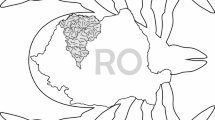Abstract
Background: We assessed the isolation rate of Borrelia burgdorferi sensu lato from blood in European patients with typical erythema migrans and evaluated the course and outcome of their illness.
Patients and Methods: Adult patients diagnosed with erythema migrans and from whom borreliae cultured from blood were included in this study.
Results: Borreliae were isolated from the blood of 35/2,828 (1.2%) patients, on average 7 days (range 1–47 days) after the appearance of erythema migrans. Only seven (20%) patients reported constitutional symptoms. 24/35 isolates were typed of which 20 were Borrelia afzelii and four were Borrelia garinii. 31 (88.6%) patients were treated with oral antibiotics while four (11.4%) received ceftriaxone iv. The course and outcome of the illness were favorable in all patients.
Conclusion: In European patients with erythema migrans the yield of blood culturing was low, spirochetemia was often clinically silent and the course and outcome of the illness were favorable; the predominantly isolated strain was B. afzelii.
Similar content being viewed by others
Author information
Authors and Affiliations
Additional information
Received: September 25, 2000 · Revision accepted: December 20, 2000
Rights and permissions
About this article
Cite this article
Maraspin, V., Ružić-Sabljić, E., Cimperman, J. et al. Isolation of Borrelia burgdorferi Sensu Lato from Blood of Patients with Erythema Migrans. Infection 29, 65–70 (2001). https://doi.org/10.1007/s15010-001-0154-6
Issue Date:
DOI: https://doi.org/10.1007/s15010-001-0154-6



